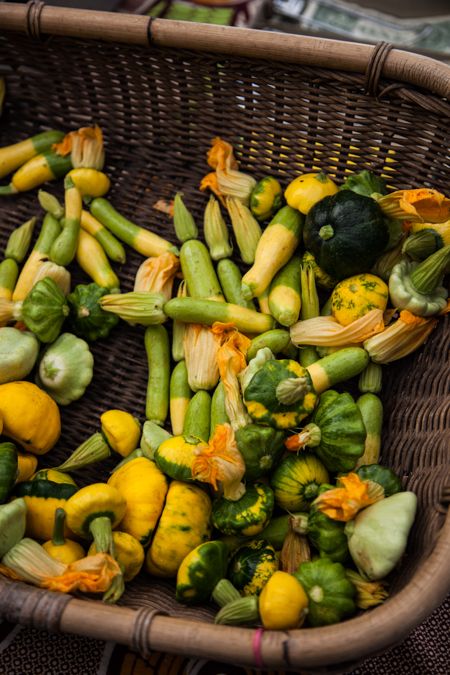What’s the difference between summer and winter squash? It’s that you plant summer squash in summer and winter squash in winter, right? Nope. In Central Texas, both types of squash can be planted in either spring or fall. The actual difference is that summer squash, which is harvested when it’s tender and immature, is best when eaten as fresh as possible, whereas winter squash, which is harvested once the skin is thick and tough, can be stored all winter long. When summer squash is planted in the spring, it’s ready to pick mid-summer. If you’d like fresh summer squash for your grill once the weather heats up, the time to plant it is now! Read on for tips on growing summer squash successfully:
- The right time to plant squash in Central Texas is after there’s no longer danger of frost (April to mid-May) and well before the first frost of winter (mid-July to mid-August).
- Summer squash varieties well suited for our region include Zucchini, Yellow Crookneck, Delicata, and Sunburst Scallop (a Pattypan variety).
- Squash needs healthy, fertile soil and full sun. Before planting, work plenty of compost into the soil.
- Plant squash from transplant or from seed on mounds. If planting from seed, plant 3 or 4 seeds per mound 1 inch deep. Seeds will sprout in about a week. Once it’s clear which are seedlings are the strongest, thin out the weaker ones by pinching off the stems at soil level.
- Some squash varieties grow in a bush form and others grow in a climbing, vining form. Space requirements vary per variety, but most need at quite a bit of room: least 2 square feet per plant.
- Squash plants are susceptible to a variety of pests and diseases. The best prevention strategy is to ensure that your soil is healthy and well mulched. Also, aphids, cucumber beetles, and squash beetles can be controlled using citrus oil, and Bacillus thuringiensis (BT), helps against caterpillars and cutworms. Water plants at their bases and avoid wetting the leaves to help prevent powdery mildew and other fungal infections. Remove any diseased plants from the garden area.
- Each squash plant will form both male and female flowers (fruit forms from the female flowers, which can be recognized by a bulge at the base). If your plants make flowers, but no fruit forms, you might have a scarcity of pollinators in your area. Try hand pollinating for now, and for the longer term, add pollinator-attracting flowering plants in and around your garden (for more tips on attracting pollinators, see our blog post about native bees).
- Summer squash can be harvested at any size. The smaller you harvest the fruit, the more tender it will be. It’s also possible to harvest and serve summer squash when with the beautiful, deep marigold flower still attached.
Enjoy!

